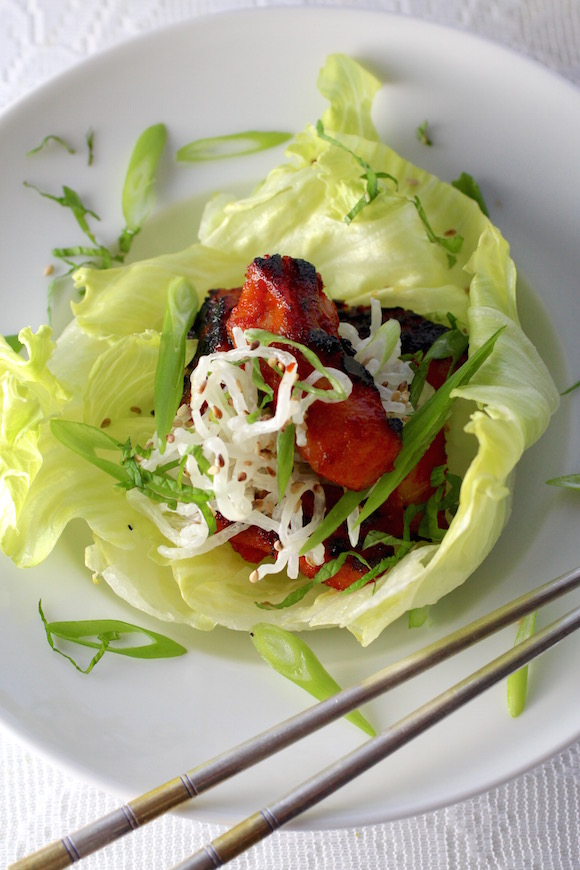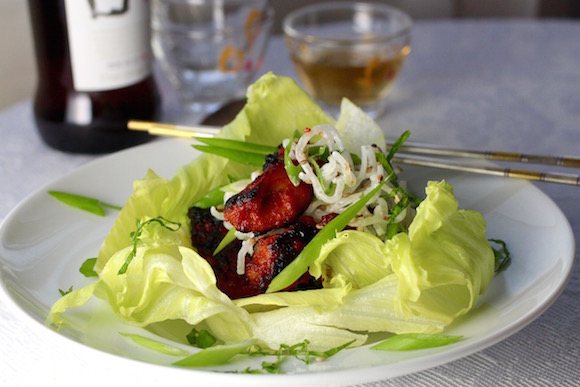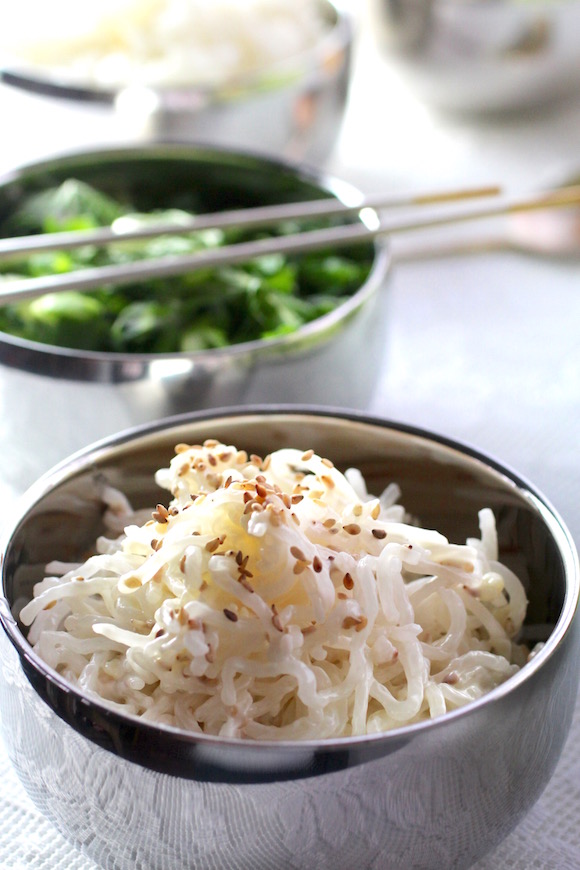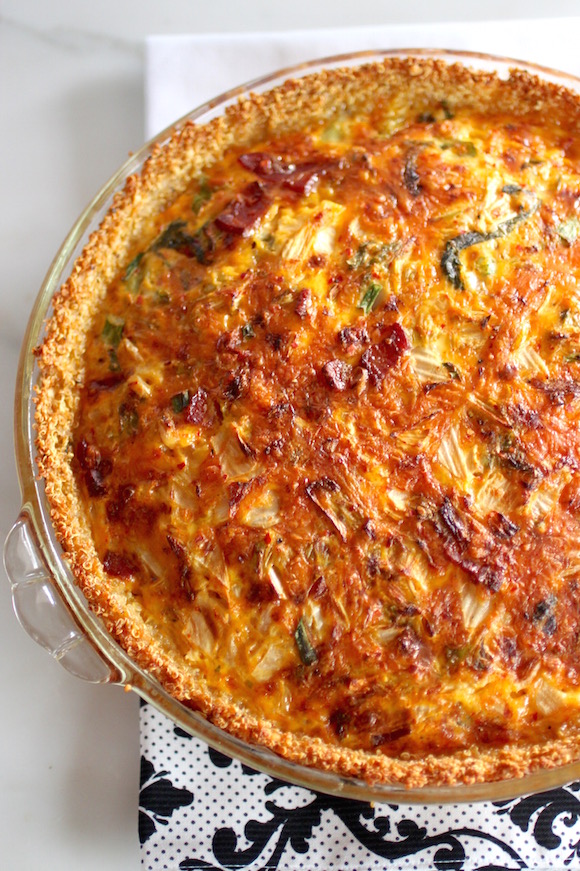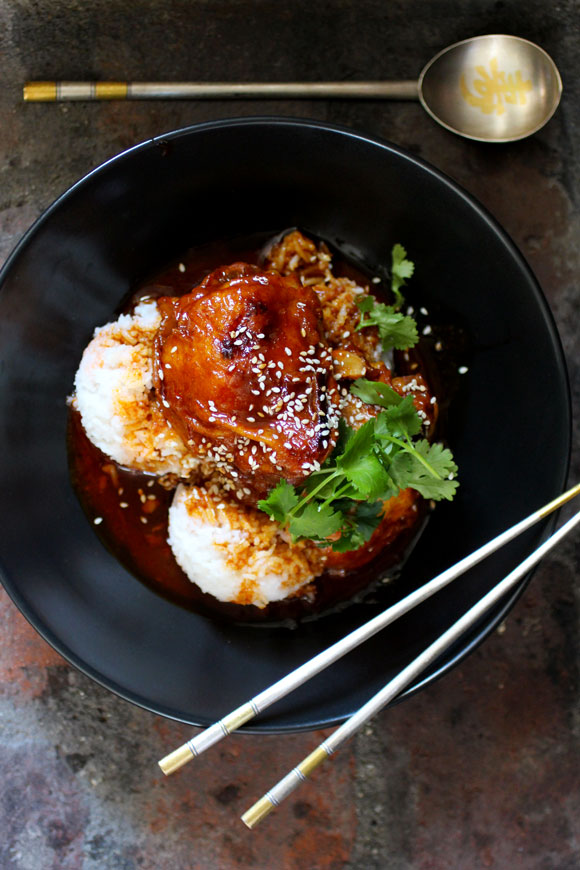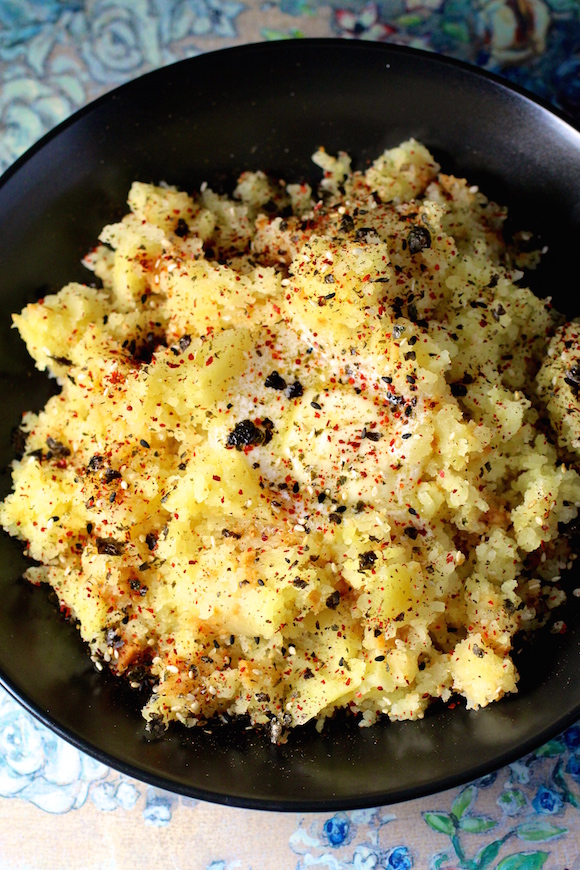Spicy Korean BBQ Chicken with Iceberg Lettuce Cups
garnished with
White Seaweed Salad, Sliced Scallion & Chiffonade of Perilla
Warning: This is not your ordinary barbecued chicken. Here, grilled Korean-style spicy smoky chicken with a hint of sweetness (dak bulgogi) is nestled in refreshingly crisp iceberg lettuce cups, topped with a white seaweed salad dressed with garlicky mayonnaise and sesame seeds, then finished with slices of scallion and herbaceous ribbons of perilla.
The chicken marinade’s main ingredient is gochujang – a Korean red chili paste with sweet heat and a fermented umami richness. It is definitely spicy – but also has a balanced fruitiness, slight smokiness and depth of flavor from the sun-dried Korean red peppers.
The chicken is served in “under-appreciated” iceberg lettuce cups. Iceberg is the perfect vehicle for transporting the chicken – the leaves are pliable, just the right size, with a beautiful pale green color, and adequate crunch. My unique white seaweed salad is made of crunchy springy kelp noodles. Perilla (wild sesame leaf) is sliced into thin ribbons and sprinkled over the chicken, adding a complex herby flavor. It’s all very fresh and summery. Low-carb too.
Korean BBQ Chicken, Lettuce Cups Recipe
Continue reading “Korean BBQ Chicken, Lettuce Cups, White Seaweed Salad”

